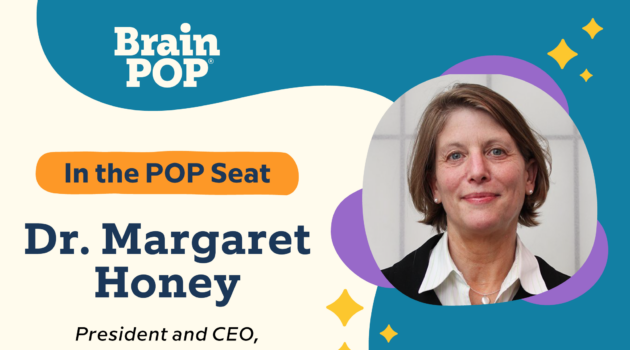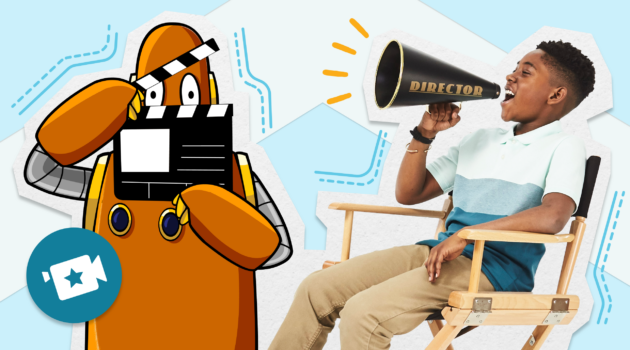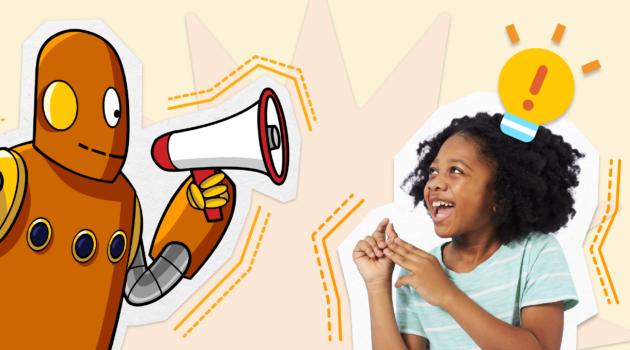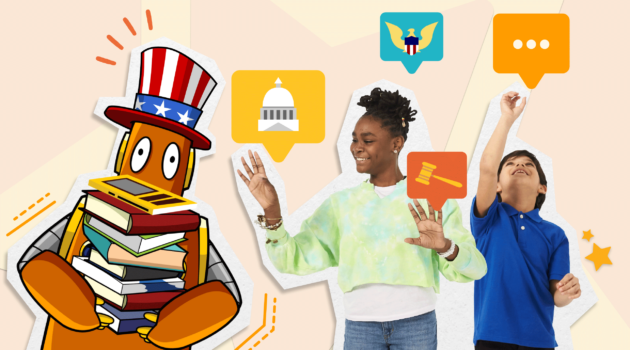Thought Leadership
The Educator’s Compass: Doing What’s Best for Kids

I have to admit that remembering travel directions is not my strong suit. Yet, from the time I was young, I could remember the points, rebounds, and assists of every Lakers player from the previous night’s game. I can still remember the name of every student at the elementary school where I taught and special qualities about each. Thankfully, our phones and cars come equipped with navigation systems, which almost never let me down.
Most educators pursue the profession because we have our compass pointed at a true north: Always do what is in the best interest of kids. But we all need support along the way. During my years as an elementary school teacher and principal, I made sure to consult my “educator’s compass” to guide me in the right direction.
What is best for kids?
This guiding question helps educators make all kinds of difficult day-to-day, week-to-week, month-to-month, and year-to-year decisions. Educators’ most important work is helping students navigate a successful path in school, encouraging them to discover their interests and strengths, and supporting them as they develop into human beings who are full of potential. At BrainPOP, we are focused on empowering teachers in this work so that students build the skills they need to thrive in tomorrow’s world. Here’s how we do it:
1. Expanding Teacher Capacity
With countless decisions to make—and often more students than hours in a day—teaching is a cognitively, emotionally, and physically demanding profession. Teachers are constantly planning lessons, learning new technology, grading, counseling, conferencing, attending professional development sessions, supervising, and so much more. They are tasked with making learning engaging and active, while simultaneously meeting education standards, preparing for assessments, and developing transferable skills. And all the while, they’re supporting students’ well-being and helping them build character. That’s a TALL order.
Lesson plans embedded in BrainPOP topic pages take some of the heavy lift off of teachers. They are designed to help activate students’ prior knowledge and build background with movies and Related Reading; apply knowledge with auto-graded quizzes and Challenge activities; and deepen and extend learning through movie making, concept mapping, and coding projects. (Explore these two examples: Alice Ball and Multi-Digit Multiplication.) Additionally, the BrainPOP Assignment Builder enables teachers to differentiate content, learning processes, and assessments for individual students, the whole class, or small groups. Educators who are looking to build a bridge between the BrainPOP platform and their instructional practice can also tap into a variety of professional learning services, including self-paced online courses, facilitated webinars, and in-person workshops.
Patricia Boguslaw, an educational technology specialist and coordinator, shared how BrainPOP has helped shape her classroom culture: “I believe in the impact BrainPOP has and how transformative it can be to instruction and assessment for students. I feel strongly that some of the biggest assets BrainPOP provides are through tools like Creative Coding, Make-a-Map, Make-a-Movie, and gamification. These playful assessments can redefine classroom instruction and the culture within a classroom, removing some of the anxiety that comes with traditional assessments. I absolutely loved our introduction to the concept mapping activity, in which students created a concept map of who they are. Many students got really excited about this project and learned so much about the tools and how to create a concept map, while I gained so much insight into my students’ lives and interests that helped me with differentiation and connection to students in my classroom.”
2. Putting Kids at the Center
Any great teacher knows that student engagement is not just a “nice to have.” A Gallup study of 128 schools and more than 110,000 students found a significant positive relationship between students’ engagement and hope and their academic growth in math, reading, and all subjects combined, as well as their postsecondary readiness in math and writing. “Focusing specifically on student engagement, the study found that schools in the top quartile of student engagement had significantly more students exceeding and meeting proficiency requirements than schools in the bottom quartile of engagement.”
BrainPOP offers many whimsical, fun, and effective ways for students to engage with content across the curriculum. According to Julie Kuzma, an instructional facilitator of technology, “BrainPOP movies and quizzes can lay the foundation for an engaging lesson by providing background and context. After the movies, I encourage discussion, then invite the kids to create their own movies or coding projects. The classroom reflection that accompanies any effective lesson will necessarily raise the volume, as kids review their work processes and final results.”
Educators’ most important work is helping students navigate a successful path in school, encouraging them to discover their interests and strengths, and supporting them as they develop into human beings who are full of potential.
3. Making Learning Active
I have always said that students must do more than simply consume knowledge. They must also produce knowledge. Kids learn best through doing. The more they explore their curiosity and utilize their talents within the classroom, the more engaged and motivated they will be to learn at a deeper level. Giving students voice and choice in their learning, as well as the opportunity to showcase what they learn, helps build confidence. This is a win for everyone in the classroom.
According to research by the Quaglia Institute for School Voice and Aspirations, “students who believe they have a voice in school are 7x more likely to be academically motivated than students who do not believe they have a voice. Student voice also leads to an increased likelihood that students will experience Self-Worth, Engagement, and Purpose in school.”
4. Building a Holistic Skillset
Educators are always focused on helping students progress toward grade-level standards. That’s where the BrainPOP approach to essential literacy skills comes in. Students have the opportunity to engage in many forms of skill building with BrainPOP and BrainPOP Jr. topics, including making inferences, interpreting main ideas, developing vocabulary and comprehension, and problem solving. Our recent study shows that students who used BrainPOP two or more times per month had measurable learning gains toward grade-level proficiency. According to Yigal Rosen, Ph.D., chief academic officer at BrainPOP, “A robust system of assessments organically embedded into learning experiences through Pause Points in BrainPOP movies, as well as quizzes, Challenge activities, and creative projects, helps students develop and demonstrate knowledge and skills and advance across their learning progression.”
It’s also important to take a wide view of learning. In the words of Dr. Rosen, “While much attention has been focused on supporting children’s development of cognitive skills such as literacy and numeracy, it is critical to understand children’s development holistically.” This includes creative thinking, critical thinking, and computational thinking. It also includes interpersonal and life skills. There is ample research on the connection between social and emotional learning and academic achievement, prosocial behaviors (like kindness, sharing, and empathy), and students’ attitude toward school.
5. “Fostering Access and Impact for All”
Every student is unique, so teachers need to develop flexible learning pathways to meet kids where they are in their learning journey. Our research paper titled “Equity in Learning with BrainPOP®: Fostering Access and Impact for All,” explains how BrainPOP incorporates research-based learning frameworks that help teachers do just that.
“If we want all students to have equal opportunities to learn, we have to be incredibly purposeful, proactive, and flexible,” said Barbara Hubert, Ph.D., senior director of learning design at BrainPOP and co-author of the research paper with Dr. Rosen. “This work begins with asset-based beliefs about students and the power of design to mitigate barriers to learning. Drawing on the principles of equity-driven frameworks like Universal Design for Learning and differentiated instruction, BrainPOP provides students with opportunities to learn in different ways using different activities, and to share what they have learned in different ways, to reach grade-level learning goals.”
Teaching is an incredibly sophisticated and dynamic profession, and there is no other job like it. Fortunately, BrainPOP helps serve as a guiding compass to support educators as they navigate this mission-critical work.
Jerry Jones is a senior account director at BrainPOP. Before joining the company, he spent more than two decades serving as an elementary school educator and school principal.






